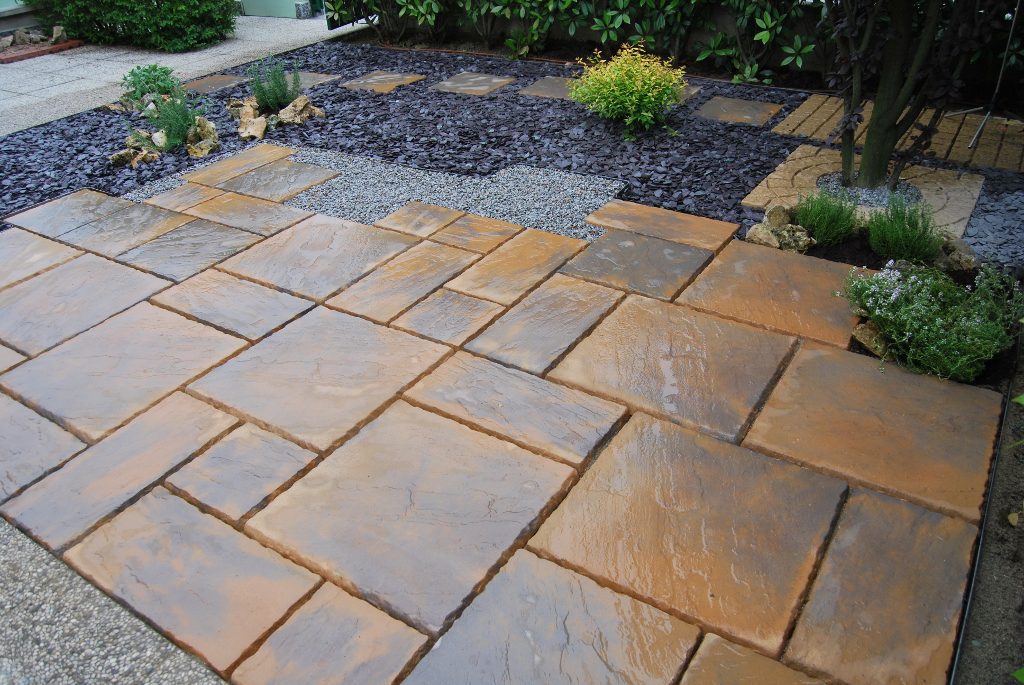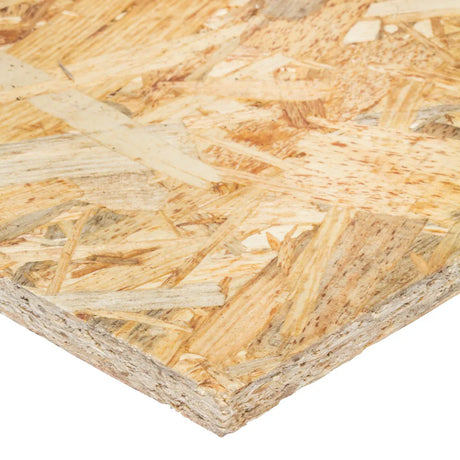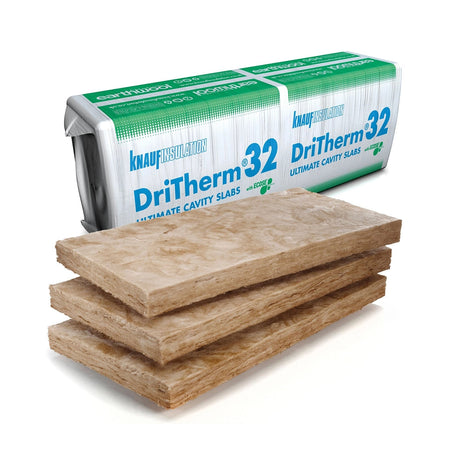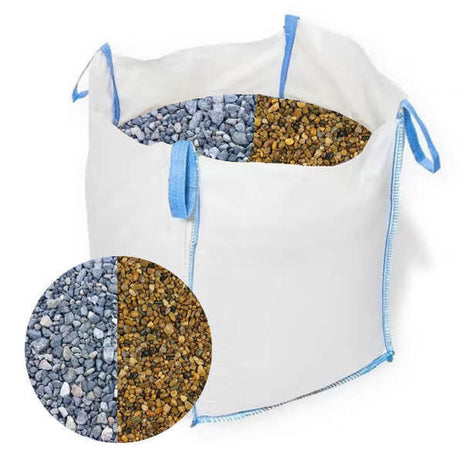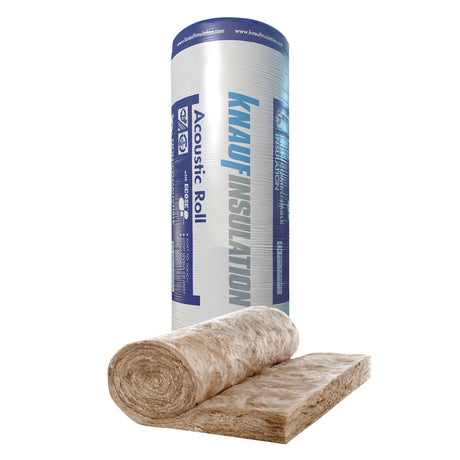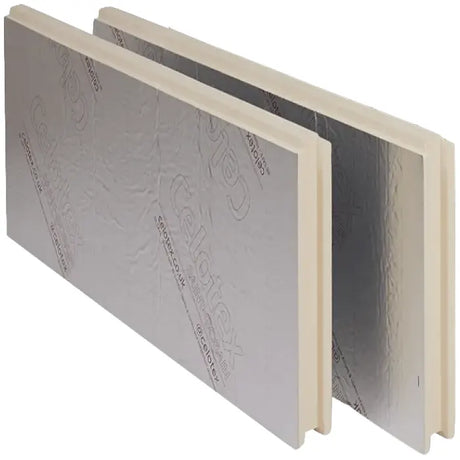How to Choose and Use Decorative Gravel, Ballast, and Sand for Your Outdoor Projects
Picture this: you've spent countless weekends planning your perfect garden transformation, only to find yourself standing in a builders' merchant, overwhelmed by the sheer variety of aggregates on offer. Sound familiar? You're certainly not alone. The choice between decorative gravel, ballast, sharp sand, and building sand can feel bewildering, especially when each serves a distinctly different purpose in your landscaping project.
The truth is, selecting the right aggregates can genuinely transform your garden or outdoor space from ordinary to extraordinary. Whether you're creating elegant walkways that guide visitors through your garden, establishing a robust driveway that withstands British weather, or designing eye-catching flowerbeds that become the talk of the neighbourhood, the foundation of success lies in choosing the appropriate materials for each specific application.
At DIY Building Supplies, we've spent years helping both enthusiastic DIYers and seasoned trade professionals navigate these crucial decisions. Based in Nottingham and serving customers across mainland UK, we understand the unique challenges that British gardens present—from managing our unpredictable rainfall to creating surfaces that can handle everything from gentle summer showers to harsh winter frost. This comprehensive guide draws from our extensive experience to demystify the world of gravel, sand, ballast, and decorative stone, ensuring your next outdoor project delivers results that exceed your expectations.
What Are Aggregates and Why Do They Matter in Landscaping?
When we talk about aggregates in landscaping, we're referring to a diverse family of granular materials that form the backbone of virtually every successful outdoor project. This extensive category encompasses decorative and functional gravel from trusted suppliers like Tarmac and Aggregate Industries, reliable ballast mixes perfect for structural work, and various sand types from leading UK producers such as CEMEX and Hanson. Additionally, the range includes stunning decorative chippings and natural pebbles that can transform even the most basic garden design into something truly spectacular.
Understanding why aggregates matter requires appreciating their multifaceted role in outdoor spaces. Beyond their obvious visual appeal, these materials serve critical functional purposes that often go unnoticed until problems arise. They dramatically improve drainage and soil stability, preventing the waterlogged conditions that can turn beautiful gardens into muddy quagmires during Britain's wetter months. The texture, colour, and contrast they provide can define garden zones, create focal points, and establish visual continuity throughout your outdoor space.
Perhaps most importantly, aggregates provide the strong, reliable foundations essential for paving, construction, and long-term landscape stability. When properly selected and installed, they create weather-resistant surfaces that require minimal maintenance while delivering years of reliable performance. From the perspective of garden economics, this combination of aesthetic enhancement and practical functionality makes aggregates one of the most cost-effective investments you can make in your outdoor space.
The key benefits extend far beyond basic functionality. Quality aggregates from established UK suppliers help suppress weed growth when properly installed with landscape fabric, reducing ongoing maintenance requirements. They provide excellent thermal mass, helping to moderate soil temperatures and create more stable growing conditions for adjacent plants. In terms of sustainability, many modern aggregates incorporate recycled materials, allowing environmentally conscious gardeners to achieve stunning results while minimising their environmental footprint.
Decorative Gravel & Chippings: Creating Visual Impact
Decorative gravel and chippings represent one of the most versatile and immediately impactful elements in contemporary garden design. Whether you're crafting an elegant pathway that meanders through established borders, creating a striking driveway that enhances your property's kerb appeal, or designing sophisticated patio areas for outdoor entertaining, the right decorative aggregate can elevate your entire outdoor aesthetic. Leading UK suppliers like Marshalls and Brett Landscaping offer extensive ranges that cater to every design preference, from subtle neutral tones that complement traditional British gardens to bold contemporary colours that make striking design statements.
The versatility of decorative gravel extends well beyond its obvious applications. Around flower beds and planters, carefully chosen chippings create attractive mulch alternatives that suppress weeds while providing excellent moisture retention for plant roots. In feature areas or low-maintenance garden zones, decorative aggregates can replace traditional lawn areas, offering year-round colour and texture without the ongoing maintenance requirements of grass. This approach has become particularly popular in contemporary garden design, where water conservation and reduced maintenance are increasingly important considerations.
Size selection plays a crucial role in both the aesthetic and functional success of decorative gravel installations. Smaller grades, typically 6-10mm, work exceptionally well for footpaths and areas where comfortable walking surfaces are essential. These finer materials compact naturally over time, creating stable surfaces that remain attractive while providing excellent drainage. Medium grades of 14-20mm offer the perfect balance for most driveway applications, providing adequate drainage while maintaining vehicle stability. Larger grades exceeding 20mm create dramatic visual impact and work particularly well in contemporary design schemes, though they're best reserved for decorative areas rather than high-traffic zones.
When planning decorative gravel installations, proper preparation proves absolutely essential for long-term success. High-traffic areas benefit enormously from a compacted sub-base, typically comprising Type 1 MOT (Ministry of Transport) aggregate from suppliers like Cemex or Aggregate Industries. This foundation layer prevents settling and maintains surface stability even under significant loading. Combining different colours or textures can create sophisticated layered effects, but requires careful planning to ensure the visual result enhances rather than overwhelms your overall garden design.
Ballast: The Foundation of Structural Excellence
Ballast represents the unsung hero of landscaping materials, providing the structural integrity that underpins countless outdoor projects across Britain. This carefully engineered sand and gravel mix, typically produced to exacting standards by companies like Tarmac and Hanson, serves as the backbone for creating robust concrete mixes essential for foundations, shed bases, and substantial footings. Understanding ballast's role in landscaping helps DIY enthusiasts and professionals alike appreciate why this seemingly unremarkable material proves absolutely crucial for project longevity and structural reliability.
The composition of quality ballast tells the story of its effectiveness. Usually supplied as a 20mm all-in-one mix combining sharp sand with carefully graded gravel, this material achieves remarkable strength and stability characteristics that make it ideal for heavy-duty applications. The precise ratio of sand to gravel, typically maintained within strict tolerances by reputable suppliers, ensures optimal particle packing and binding properties when mixed with cement and water. This consistency makes ballast particularly valuable for structural groundwork in landscaping, where foundation quality directly impacts the long-term success of features like retaining walls, garden structures, and paved areas.
Beyond its primary role in concrete production, ballast proves invaluable for fence post setting and creating stable bases under paving slabs. The material's excellent drainage characteristics help prevent the frost damage that can devastate poorly prepared foundations during British winters. When installing garden structures or features requiring substantial foundations, the combination of ballast with appropriate Portland cement creates concrete that exceeds typical domestic requirements while remaining cost-effective for most garden projects.
Professional landscapers particularly value ballast for its consistency and reliability. Unlike site-won materials that can vary significantly in quality and composition, commercially produced ballast from established suppliers maintains strict quality standards, ensuring predictable performance across different projects and seasons. This reliability becomes especially important in structural applications where foundation failure could compromise safety or require expensive remedial work.
Sand Types: Understanding the Specialist Solutions
The world of construction sand encompasses several distinct types, each engineered for specific applications and offering unique performance characteristics that make them essential for different aspects of landscaping work. Sharp sand, perhaps the most versatile of the sand family, derives its name from its angular, gritty texture created during the quarrying and processing methods employed by leading UK suppliers like CEMEX and Aggregate Industries. This angular particle structure provides exceptional mechanical stability, making sharp sand absolutely indispensable for block paving installations where long-term stability under traffic loading is paramount.
Sharp sand's applications extend well beyond paving, proving equally valuable for slab laying where its drainage properties help prevent the waterlogging that can cause heaving and settlement issues. Professional landscapers frequently incorporate sharp sand into rendering applications, where its angular particles create strong mechanical bonds with cement, resulting in durable, weather-resistant finishes. Additionally, sharp sand serves as an excellent soil amendment, improving drainage in heavy clay soils and creating more hospitable growing conditions for a wide range of plants.
Building sand presents a markedly different set of characteristics, engineered specifically for bricklaying and general construction mortar applications. Its finer, more rounded particle structure creates the smooth, workable consistency that bricklayers require for achieving neat, professional joints. However, this same characteristic that makes building sand excellent for mortar work renders it unsuitable for paving applications, where its tendency to shift under load can compromise surface stability. Understanding this distinction helps avoid costly mistakes that could undermine project quality and longevity.
Kiln-dried sand represents a specialist product that addresses specific requirements in modern paving installations. Processed through controlled heating to remove all moisture content, this super-fine material flows easily into the narrow joints between block pavers, creating the tight mechanical lock essential for surface stability. Leading suppliers like Marshalls and Brett produce kiln-dried sand to exacting specifications, ensuring consistent performance across different batches and weather conditions. The dry nature of this material prevents premature setting during installation, allowing installers time to achieve perfect finishes while ensuring optimal joint filling.
Proper storage and handling of different sand types can significantly impact project outcomes. Sharp sand should be kept covered to prevent contamination with organic matter that could affect its binding properties when mixed with cement. Building sand requires protection from both contamination and excessive moisture, which can affect its workability in mortar applications. Kiln-dried sand demands particular care, as exposure to moisture can cause it to clump and lose its free-flowing characteristics, potentially compromising joint-filling performance.
Bulk Bags vs Handy Bags: Choosing the Right Quantity and Format
The decision between bulk bags and handy bags represents more than simple quantity considerations—it reflects a strategic choice that impacts project efficiency, cost-effectiveness, and practical handling requirements. Bulk bags, typically containing one tonne of material and measuring approximately one cubic metre, prove ideal for substantial garden transformations, complete driveway installations, or professional landscaping projects where material requirements justify the larger investment. These substantial containers offer significant cost savings per unit of material while reducing packaging waste, making them particularly attractive for environmentally conscious consumers and projects requiring multiple cubic metres of aggregate.
Professional landscapers and ambitious DIY enthusiasts frequently choose bulk bags for their convenience and efficiency benefits. A single delivery can supply sufficient material for extensive projects, reducing delivery charges and minimising site disruption. The standardised nature of bulk bag deliveries also simplifies project planning, as suppliers like DIY Building Supplies can provide accurate timing and placement, ensuring materials arrive precisely when needed. For contractors working on multiple properties or large estate developments, bulk bags enable efficient material management while maintaining cost control.
Handy bags, typically containing 20-25 kilograms of material, serve a distinctly different market segment while offering unique advantages for specific applications. These manageable packages prove invaluable for homeowners tackling smaller projects, conducting maintenance work, or addressing unexpected repairs where bulk quantities would prove excessive. The convenience factor cannot be overstated—handy bags store easily in domestic settings, transport readily in standard vehicles, and allow precise quantity control for smaller applications.
The choice between formats often depends on project scope and timeline considerations. Weekend DIY enthusiasts working on garden border improvements or small patio repairs find handy bags offer the perfect balance of convenience and quantity. The ability to purchase exactly the required amount prevents waste while avoiding the storage challenges associated with bulk deliveries. Additionally, handy bags enable project flexibility, allowing gardeners to experiment with different aggregate types or colours without committing to large quantities.
Storage considerations play a crucial role in format selection. Bulk bags require adequate space for delivery vehicle access and material storage, potentially limiting their suitability for properties with restricted access or limited storage facilities. Handy bags offer greater flexibility, storing conveniently in garages, sheds, or other covered areas while remaining readily accessible for use. This flexibility proves particularly valuable for projects spanning extended timeframes or seasonal work patterns common in British gardening.
Calculating Material Requirements: Getting the Quantities Right
Accurate material calculation represents one of the most critical yet frequently overlooked aspects of successful landscaping projects. The difference between ordering precisely the right amount and facing shortfalls or excessive waste can significantly impact both project costs and completion timelines. Professional quantity calculation begins with careful measurement of the target area, recording length, width, and required depth in consistent units—preferably metres for larger projects or centimetres for smaller installations.
The fundamental calculation of length × width × depth provides the basic volume requirement, but successful projects require additional considerations that separate professional approaches from amateur attempts. Compaction factors prove particularly important when working with loose aggregates, as materials settle and compact naturally over time and under loading. Industry standards typically recommend adding 5-10% to calculated volumes for decorative applications and up to 15% for structural uses where significant compaction is expected.
Different aggregate types require specific depth considerations based on their intended function and expected loading. Decorative gravel for footpaths typically requires depths of 25-40mm to provide adequate coverage while maintaining cost-effectiveness. Driveway applications demand greater depths, usually 50-75mm, to ensure long-term stability under vehicle loading. Structural applications like shed bases or retaining wall foundations may require depths exceeding 150mm, depending on soil conditions and design loads.
Modern technology has simplified the calculation process considerably, with online aggregate calculators provided by suppliers like DIY Building Supplies offering instant results based on project dimensions and material types. These sophisticated tools incorporate industry-standard compaction factors and waste allowances while providing accurate tonnage and bag quantity recommendations. However, complex projects or unusual applications benefit from direct consultation with experienced suppliers who can provide site-specific advice based on local conditions and requirements.
Professional landscapers often employ additional techniques to refine quantity calculations and prevent costly errors. Site visits allow assessment of access conditions, soil types, and drainage requirements that might affect material specifications or installation methods. Experienced contractors typically order materials in phases for large projects, ensuring optimal freshness while maintaining project momentum. This approach proves particularly valuable when working with cement-based products or materials sensitive to weather conditions.
Professional Installation Tips for Long-lasting Results
The longevity and performance of any aggregate installation depends fundamentally on proper preparation and installation techniques that go far beyond simply spreading material across the target area. Professional installation begins with comprehensive site preparation, including accurate level setting, adequate drainage provision, and appropriate sub-base preparation tailored to the specific application and expected loading conditions. These foundational steps, while often invisible in the finished project, prove absolutely crucial for preventing common problems like settlement, weed growth, and premature material displacement.
Effective weed prevention represents one of the most important yet frequently neglected aspects of aggregate installation. Professional-grade landscape fabric, properly installed before aggregate placement, creates an impermeable barrier that prevents weed establishment while allowing essential drainage. Leading suppliers like Mypex and Plantex offer specialist fabrics engineered specifically for aggregate applications, providing excellent weed suppression while maintaining soil aeration and water movement. The fabric should extend beyond the aggregate area and be properly secured with landscape pins to prevent movement during installation and subsequent settling.
Compaction techniques vary significantly depending on material type and intended application, but all benefit from systematic approaches that ensure uniform density and long-term stability. Hand compaction using appropriate plates proves sufficient for most domestic applications, while larger areas benefit from mechanical compaction using vibrating rollers or specialised aggregate compactors. The key lies in achieving consistent compaction across the entire installation, paying particular attention to edges and corners where hand finishing is typically required.
Edge restraints play a crucial role in maintaining installation integrity over time, preventing the gradual material migration that can compromise both appearance and functionality. Timber edging, treated to appropriate standards for ground contact, provides a traditional solution that suits most garden applications. Metal edging systems offer greater durability and precision, particularly valuable for contemporary designs where clean lines are essential. Professional installations often incorporate concrete haunching behind edging materials, providing additional stability for high-traffic areas or installations subject to significant lateral loading.
Drainage considerations underpin the success of virtually all aggregate installations, particularly in the British climate where effective water management proves essential for preventing frost damage and maintaining surface stability. Proper installation incorporates appropriate falls towards designated drainage points, ensuring surface water sheds quickly without ponding or erosion. Sub-surface drainage may be necessary in challenging conditions, with perforated pipes and gravel-filled trenches providing effective solutions for problematic areas.
Making the Right Choice for Your Project
The key to successful aggregate selection lies in understanding how material properties align with your specific project requirements, site conditions, and long-term maintenance preferences. Decorative gravel excels where visual impact and low maintenance are priorities, offering endless possibilities for creative garden design while providing practical benefits like weed suppression and excellent drainage. The extensive range of colours, textures, and sizes available from UK suppliers enables precise matching to existing garden features while creating opportunities for bold design statements that enhance property value.
Ballast emerges as the optimal choice where structural integrity takes precedence over aesthetic considerations. Its proven performance in concrete production makes it indispensable for foundations, shed bases, and other applications where long-term stability justifies the additional material cost. Professional landscapers consistently choose ballast for structural applications, recognising that foundation quality directly impacts project longevity and client satisfaction.
Sand selection requires careful matching of material properties to application requirements. Sharp sand's mechanical stability makes it essential for paving and structural applications, while building sand's workability proves crucial for achieving professional-quality mortar joints. Kiln-dried sand, despite its specialist nature and higher cost, proves invaluable for achieving perfect block paving finishes that maintain their appearance and stability over extended periods.
The decision-making process benefits enormously from consulting with experienced suppliers who understand local conditions and application requirements. At DIY Building Supplies, our technical team provides comprehensive support for material selection, helping customers navigate the complexities of aggregate choice while ensuring optimal outcomes for their specific projects. This consultation process considers factors like soil conditions, drainage requirements, expected loading, and maintenance preferences, resulting in recommendations tailored precisely to individual circumstances.
Quality assurance represents another crucial consideration in material selection. Established suppliers like DIY Building Supplies maintain rigorous quality standards, ensuring consistent material properties and performance across different batches and seasons. This reliability proves particularly important for large projects or professional applications where material variability could compromise quality or create costly delays.
Transform Your Outdoor Space with Confidence
Whether you're embarking on an ambitious complete garden transformation, enhancing your property's kerb appeal with an attractive new driveway, or simply refreshing existing garden borders with contemporary decorative elements, the right aggregate selection makes an extraordinary difference to both immediate visual impact and long-term performance. The comprehensive range of materials available from established UK suppliers provides solutions for every conceivable application, from functional drainage improvements to stunning decorative installations that become genuine focal points in garden design.
The journey from initial concept to completed installation becomes significantly smoother when supported by experienced suppliers who understand both material properties and practical application requirements. At DIY Building Supplies, we've built our reputation on providing not just quality materials from trusted manufacturers like Tarmac, CEMEX, and Aggregate Industries, but comprehensive technical support that ensures optimal project outcomes. Our team's extensive experience with British gardening conditions and local planning requirements enables us to provide advice that goes beyond basic material specification to encompass installation techniques, drainage considerations, and long-term maintenance strategies.
Success in aggregate-based landscaping projects ultimately depends on the careful matching of materials to applications, proper installation techniques, and realistic planning that considers both immediate requirements and long-term performance expectations. By combining quality materials with appropriate expertise and careful preparation, even ambitious DIY projects can achieve professional-standard results that enhance property value while providing years of reliable performance and aesthetic pleasure.
Ready to transform your outdoor space with premium aggregates?
Explore our comprehensive collection of gravel, sand, ballast, and decorative aggregates at DIY Building Supplies. Our expert team is ready to help you select the perfect materials for your project and provide the technical support you need for professional results.
Contact our technical team today for personalised advice on material selection, quantity calculations, and installation guidance tailored to your specific project requirements. With nationwide delivery across mainland UK and comprehensive technical support, we're here to ensure your landscaping project exceeds expectations.

